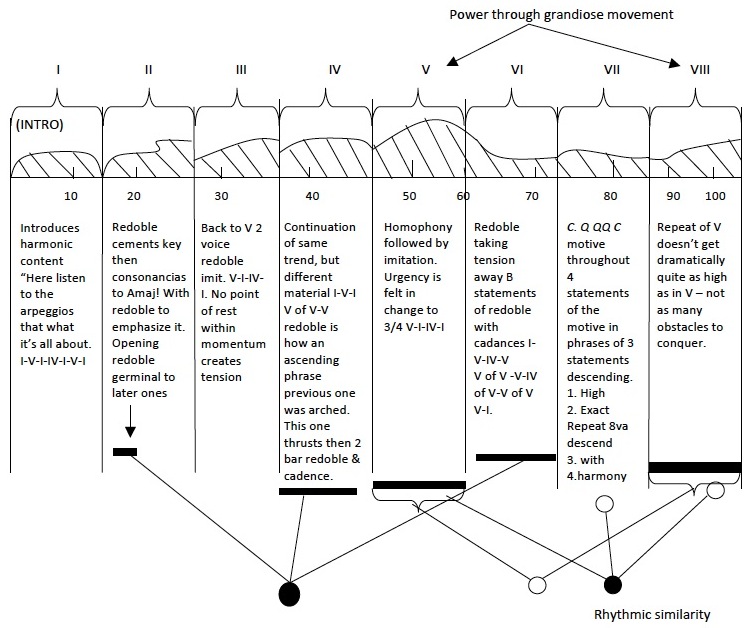| Source title | En la fantasia passada haueys visto el quinto y sexto tono porqu[e] terminos le podeys hazer en la vihuela. En esta fantasia que se sigue tañeys estos dichos tonos por otros terminos. Y porque en la vihuela se vsa mas tañer el quinto y sexto tono por estos terminos que esta fantasia anda he hehco esta mutacion de termino que veys. |
|---|---|
| Title in contents | |
| Text incipit |

Music
Category abstract
Genre fantasia
Fantasia type Id+Im
Mode 5+6
Voices 4
Length (compases) 104
Vihuela
Tuning A
Courses 6
Final VI/1
Highest I/8
Lowest VI/1
Difficulty not specified
Tempo variable
Song Text
Language
Vocal notation
Commentary
Typical episodic style of Milan’s fantasias of consonancias and redobles. The work holds together by its contrasts of texture and its harmonic uniformity. Most of the redobles oscillate around I, IV, V harmonies. Harmony is the greatest unifying force. The one place where it deviates is one of the features of the piece, and Milan makes it so: the shift to “A major” (compases 21-24).
There are appears a partial consciousness of total form (see below). The main climax (section V) is carefully developed. Section 7, very pleasing on its own, doesn’t logically fit, apart from harmony. It is one of Milan’s more picturesque departures. The weakness of its surrounds suggests a temporary interest in the picturesque digression.
Concordance. This piece was copied into the Castelfranco MS, (fol. 29v-30) entitled "fantasia. spagnola. dolce / et. alegra" (Identified by Franco Pavan, 21 May 2009). It is copied in Italian tablature (the inverse of Milán) using typical headless rhythmic signs, and is an accurate copy. One chord has one note omitted. This appears to be the only difference.
